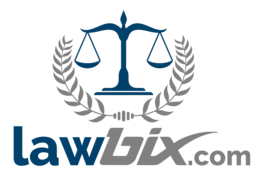INTODUCTION:
Examination of witnesses is one of the principle feature of criminal trial. Witness statements are one of the most important evidence that can be presented in the court because the person giving the statement regarding the fact in issue has witnessed it happen personally. Chapter-X section 135-165 deals with examination of witness in chief, their cross examination, the method of impeaching the credit of witness. This article will cover all the important topics in a sequential manner
ADMISSIBILITY OF EVIDENCE:
Section 5 of the INDIAN EVIDENCE ACT deals with the admissibility of the evidence and it states that only those evidence are admissible in a trial which supports the relevant fact or a fact in issue and not otherwise
And for the evidence to be admissible in the court, the judge must be convinced that the evidence establishes relevancy with the fact in issue under section 136 of the evidence act
ORDER OF PRODUCTION AND EXAMINATION OF WITNESS:
Section 135 lays down the order in which the witnesses are to be called shall be regulated or decided by the law and practice for the time being in both civil and criminal trials discretely. The order of examination of witness involves 2 things:
(1) which party is to examine his witnesses first
(2) in what order witnesses are to be examined by the party.
#fact: In civil cases the party who has the right to begin i.e. on whom the burden of proof lies examines his witness first. Whereas in criminal cases the prosecution has to examine his witness first
EXCLUSION OF WITNESS FROM THE COURT ROOM
When one party begins with his evidence and examination , the witness must be kept outside the court room. They are required to be examined one by one and when one witness is being examined then the other witness to be examined later must be kept outside the court room .
If a witness reminds in a court room while the other witness is being examined his examination cannot be refused on mere ground of his presence while the examination of other witness was in proceeding, only a note has to be given to the extent stating that he was present in the courtroom while the examination of other witness was going on
EXAMINATION-IN-CHEIF :
It can be easily understood as examination of witness by the party who calls him is known as examination in chief. The objective of examination in chief is to bring out the truth, to prove the facts in favor of the party calling the witness .
The witness can give evidence of facts only and not evidence of law
CROSS EXAMINATION
After the party calling the witness has finished examination-in-chief, the opposite party has the right to cross examine the witness. Cross examination if done properly is one of the most useful and effective tool for discovering the truth, but if it is not done properly then it can have an adverse effect on the trail on the party conducting cross examination.
Thus we can say that cross examination is a double edged sword which if wielded properly can assure you victory otherwise is failed to use properly can cut one’s own hand . that’s why cross examination has been called an important tool of discovering truth in the evidence law
RE EXAMINATION
Here the general rule is that the counsel who examined in chief conducts the re-examination, other things being equal any branch of the examination should be given to the counsel who is best acquainted beforehand with the testimony of the witnesses.
The object of re-examination is simply to obtain from the witness an explanation for what he said on cross-examination. Such an opportunity proceeds from the system adopted in our courts of eliciting evidence by means of questions.
DISTINCTION BETWEEN EXAMINATION-IN-CHEIF, CROSS EXAMINATION AND RE-EXAMINATION
| EXAMINATION-IN-CHEIFEXAMINATION-IN-CHEIF | EXAMINATION-IN-CHEIF | RE EXAMINATION |
| Examination-in-chief is examination of witness by a person calling him | Cross examination is examination of same witness by the other counsel | Re examination is examination of witness to remove inconsistency arised during examination in chief, and cross examination |
| the order of examination in chief is first | the order of cross examination is second | the order of re examination is third |
| The purpose of examination in chief is to take statement for which he is called | the purpose of cross examination is to test accuracy of witness | the purpose of it is to remove inconsistency |
| no leading question may be asked during examination in chief | leading question may be freely asked in it | again here no leading question can be asked |
| examination in chief is part and parcel of judicial proceedings | cross examination is one of the most important tool for discovering truth | re examination is not a necessary part of the lot |
IMPEACHING CREDIT OF WITNESS
Impeaching credit of witness has been talked about in section 155 of the evidence act and in the section it talks about the 3 ways in which the credit of the witness cam be impeached, those are as follows
1) By providing independent evidence to the court that the witness examined has a reputation of untruthfulness and is of unworthy credits
2) by giving independent evidence about the witness has been bribed or has accepted the offer of bribe , and in the evidence bribre by the witness must be proved.
3)the credit of the witness can be impeached by proof of his previous contradictory statement before the court
CONCLUSION:
The evidence Act provides protection and freedom to witnesses to provide statement without the fear of prosecution, and codifying the procedure to examine the witness helps the judiciary alot in bringing up the facts, truth and evidence

